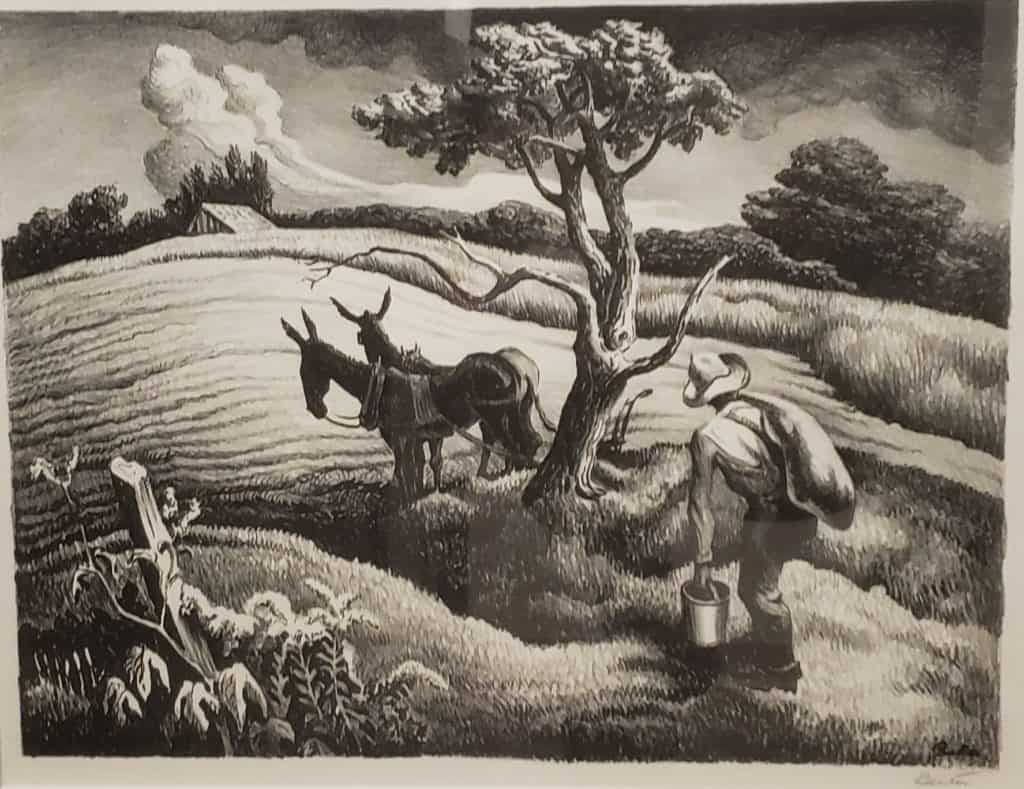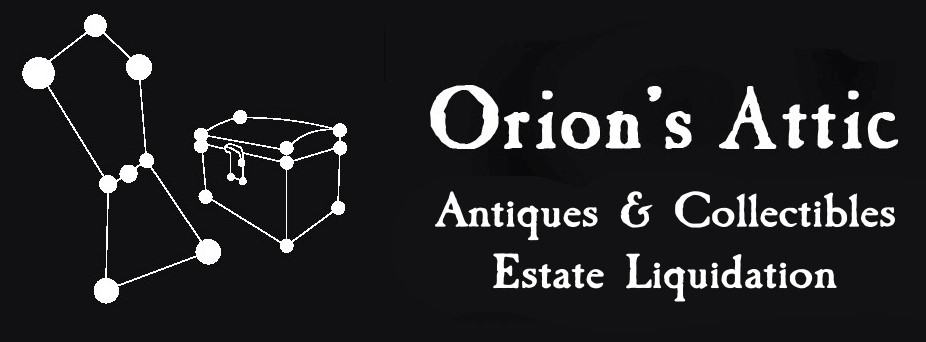Welcome to our “Ask The Attic” — our new series of posts in which we provide answers to a wide array of questions that people frequently ask us. Today’s question: What’s my Thomas Hart Benton print worth?

Thomas Hart Benton self-portrait, courtesy of the Smithsonian.
Art is one of the trickiest items there is to evaluate. Signed prints can be even harder. A big part of the reason for this today is often the lack of demand for many prints signed by even well-known artists. And we don’t mean “today” as in the era of the coronavirus pandemic; We mean “today” as in the past decade and counting. Signed limited edition prints rarely ever command much attention on the market today but some signed original prints not made in big batches can still draw interest — and thus quality dollars.
We recently ran across some prints by such an artist, which prompted us to consult with our favorite fine art appraiser, Sarah Reeder, about the question of Thomas Hart Benton print worth (value). She is the owner of Artifactual History® Appraisal serving Northern Virginia and the Washington, D.C. metro area and co-editor of Worthwhile Magazine™.
We hire her whenever we encounter a complex art challenge. We generally interact with art from the point of buying it and reselling it, or sometimes selling it on consignment. Before we do either, though, it’s imperative for us to be able to properly educate art owners so that they can make decisions about what’s best for them. As a buyer/reseller, we have to be very conservative in our approach to what we can offer to pay, or what we suggest to clients a given sale might net.

Approaching Storm
Let’s look at a few different perspectives on Thomas Hart Benton’s lithograph “Approaching Storm” from 1938.
Here’s Reeder’s view:
“Lithographs are prints made from carved stones, and this one is signed in pencil lower right. Prints were an especially popular medium during the economic struggles of the 1930s because they were considered a more accessible format that allowed a greater portion of the population to be able to afford art in their homes. Benton was known for his distinctive, dramatic style featuring elongated figures and bleak landscapes. While the source works for his prints were mainly original paintings and drawings, he subsequently has become best known for his printed works, which were widely collected in the 1930s and 40s.
“Benton (American, 1889-1975) was a notable artist of the Regionalist movement popular in the 1930s as well as a teacher at the Art Students League (Jackson Pollock is one of his most famous students) and the Kansas City Art Institute. I often come across vintage prints by Benton in my appraisal work and it’s useful for people to know how to recognize them as they tend to have higher market values than many prints by other artists.

Sarah Reeder
“There are many different levels of the market, and corresponding different values depending on the market level and effective date (I go into all the details in this article I wrote for Worthwhile Magazine™) but here I will discuss the two levels that are most helpful for the general public: retail replacement value and fair market value.
“Retail replacement value is the amount a gallery would price a Benton print at, and the amount you would want to have your print insured at if I was writing an appraisal report for you. This would ensure that in the event of loss, you would receive a sufficient settlement from your insurance company that you could purchase a replacement for your lost print.
“Fair market value is a level used by the IRS for appraisal reports for federal uses (such as charitable contribution or estate tax) and it is closer to what an individual could expect to realize in a planned future sale of an item. Fair market value uses data from previous auction sales and is often significantly lower than the retail level of the market.
“At the retail replacement level at the time of writing, I would expect the lithograph to be priced around $5,500 if it is in good condition, less if it isn’t. At the fair market value level, I would expect the lithograph to sell at auction for around $3,000 if it were offered in a well-advertised auction at a venue with a strong reputation selling Benton prints.”

How do you know if a print is a reproduction? Sometimes you can just look at the tiny print in a bottom corner.
That is a volume of great information that lends itself to the next series of questions. We would share Reeder’s feedback with a Benton seller and share some additional thoughts. As dealers, we recognize that most money we spend buying art likely won’t be recuperated for a long time if we sell it directly through our online store, shows or other venues. We would have to offer a price worth the financial risk, time and work involved. For most dealers, that’s going to be about half of the ultimate price we realistically expect to achieve — and that sum is likely to smaller than estimates unless we’re willing to hold on to a piece for ages hoping we’ll find that one buyer willing to pay a higher price.
In a case like this, we probably wouldn’t make an offer for fear of hurting a seller’s feelings. Sometimes it’s better for us to pass on even great pieces rather than risk tarnishing a good relationship. If a given seller just wanted to get the piece sold so that he or she could close the books on an estate liquidation project and was comfortable with a conservative offer, we may well make one.
If the seller wanted to seek a higher-dollar sale, we would help a seller find the right auction house best suited for a Benton piece. We would, however, have to explain the old adage that there have to be at least two passionately interested people bidding at an auction for the seller to achieve the bigger number. Auctions are always a risk. It’s also important to remember that auction house commissions can range on average from 20 to 40 percent.
At the end of the day, all of this leaves a seller with a wide range of potential values — from about a $1,000 cash on the barrel offer from a local dealer to $1,800 to $2,400 and up at auction. Note that the auction may also take months to a year later, with auction checks arriving 30 to 90 days after that — leaving the seller waiting a long time for payment. The final arbiter of value, of course, is another truism: the value of any object is what a willing buyer is willing to pay to a willing seller on any given day.
Would you like to sell your sterling silver or do you have questions about your treasures? Contact us today. Orion’s Attic is a full-service estate liquidation company serving Maryland, Washington D.C. and Northern Virginia — and sometimes beyond. We also provide general art appraisal services. Do you need a great fine art appraiser? Contact our friend Sarah Reeder at ArtifactualHistory.com.

Approaching Storm, from Orion’s Attic archives

